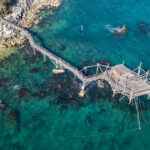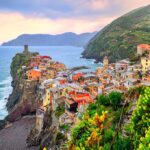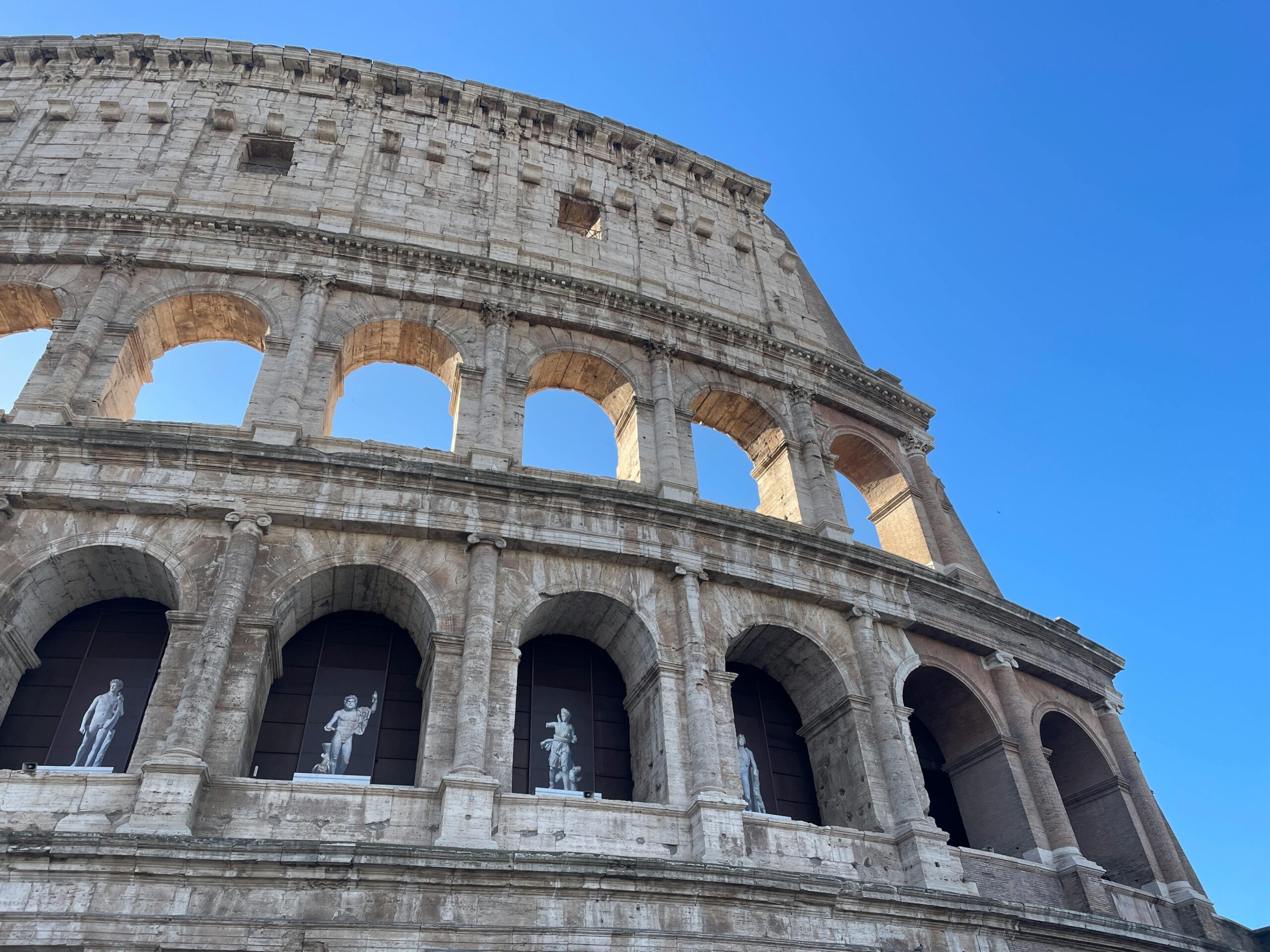
The Cinque Terre National Park, also known as Parco Nazionale delle Cinque Terre in Italian, is a protected area located in the province of La Spezia, Liguria, in northern Italy. Established as an Italian national park in 1999, it covers a total area of 4,300 acres, making it the smallest national park in Italy. Despite its size, it is renowned for its breathtaking beauty and unique cultural heritage.
Thank you for reading this post, don't forget to subscribe!Nestled along the rugged coastline of the Italian Riviera, the Cinque Terre National Park is a true gem of Italy. Its name, which translates to “Five Lands,” refers to the five picturesque fishing villages that dot the coastline: Monterosso al Mare, Vernazza, Corniglia, Manarola, and Riomaggiore. Each village has its own distinct charm and character, with colorful houses perched on cliffs, narrow winding streets, and stunning views of the turquoise waters below.
Visiting the Cinque Terre National Park is like stepping back in time. The villages have managed to preserve their traditional way of life, with fishing and agriculture still being the main sources of income for the locals. The terraced vineyards and olive groves that cling to the steep hillsides are a testament to the hard work and ingenuity of the people who have called this region home for centuries.
One of the best ways to explore the Cinque Terre National Park is by hiking along the famous Sentiero Azzurro, or Blue Trail, which connects all five villages. This scenic trail offers breathtaking views of the coastline, as well as the opportunity to immerse yourself in the natural beauty of the park. Along the way, you’ll pass through vineyards, olive groves, and fragrant lemon trees, and you may even encounter some of the local wildlife, such as wild boars or birds of prey.
In addition to hiking, the Cinque Terre National Park offers a variety of other activities for visitors to enjoy. You can take a boat tour along the coast, rent a kayak to explore the hidden coves and sea caves, or simply relax on one of the sandy beaches. The park is also home to a number of cultural and historical sites, including ancient churches, medieval castles, and traditional Ligurian houses.
Whether you’re a nature lover, a history buff, or simply looking for a peaceful escape from the hustle and bustle of everyday life, the Cinque Terre National Park has something to offer everyone. Its stunning natural beauty, rich cultural heritage, and warm hospitality make it a must-visit destination for anyone traveling to Italy.
A Land of Five Towns
The Cinque Terre National Park is named after the five picturesque coastal towns that are nestled within its boundaries. These towns are Riomaggiore, Manarola, Corniglia, Vernazza, and Monterosso al Mare. Each town has its own distinct charm and character, offering visitors a glimpse into the traditional way of life in this region.
What makes the Cinque Terre National Park truly special is the harmonious integration of the towns with the surrounding natural landscape. The colorful houses, perched on cliffs overlooking the crystal-clear waters of the Ligurian Sea, create a postcard-perfect setting that has captivated travelers from around the world.
Starting from the southernmost town of Riomaggiore, visitors can embark on a scenic hike along the famous Sentiero Azzurro, or Blue Trail, which connects all five towns. This trail winds its way along the rugged coastline, offering breathtaking views of the sea and the terraced vineyards that cling to the steep hillsides. Along the way, hikers can stop in each town to explore its narrow streets, visit local shops and cafes, and sample the region’s delicious seafood and wines.
Each town in the Cinque Terre has its own unique character. Riomaggiore, with its colorful houses stacked haphazardly on the hillside, exudes a lively and vibrant atmosphere. Manarola, known for its charming harbor and picturesque vineyards, is a haven for artists and photographers. Corniglia, perched high on a cliff, offers panoramic views of the surrounding coastline. Vernazza, with its medieval castle and quaint harbor, is often considered the most picturesque of the five towns. And finally, Monterosso al Mare, the largest and most tourist-friendly town, boasts beautiful beaches and a lively promenade lined with restaurants and shops.
While the Cinque Terre National Park is a popular destination for tourists, it has managed to maintain its authenticity and charm. The towns have strict regulations in place to preserve their architectural integrity and protect the natural environment. Visitors are encouraged to explore the area on foot or by train, as cars are not allowed within the towns. This pedestrian-friendly approach allows visitors to truly immerse themselves in the beauty and tranquility of this unique region.
Whether you’re a nature lover, a food enthusiast, or simply seeking a peaceful escape from the hustle and bustle of everyday life, the Cinque Terre National Park has something to offer everyone. From its stunning coastal vistas to its charming towns and delicious cuisine, this UNESCO World Heritage site is a true gem of Italy’s Ligurian coast.
Within the lush forests of the Cinque Terre National Park, a world of wonders awaits. Towering trees, some hundreds of years old, create a canopy overhead, filtering the sunlight and creating a tranquil atmosphere. As you wander through the forest, you may come across a variety of wildlife, from deer gracefully leaping through the undergrowth to colorful birds flitting between the branches.
The terraced vineyards that dot the landscape are a testament to the ingenuity and hard work of the local farmers. These carefully cultivated slopes not only produce some of the finest wines in the region but also create a stunning visual spectacle. As you stroll through the vineyards, you can admire the neatly arranged rows of grapevines, their leaves shimmering in the sunlight. In the autumn, the vineyards come alive with vibrant hues of red, orange, and gold as the grapes ripen, creating a truly magical sight.
While exploring the Cinque Terre National Park, you may also stumble upon ancient olive groves, their gnarled trunks standing as a testament to the enduring relationship between humans and nature. The olive trees, some of which are centuries old, bear witness to the generations of farmers who have carefully tended to them, harvesting their precious fruits to produce the region’s renowned olive oil. The groves provide a serene and peaceful setting, where you can take a moment to appreciate the beauty and tranquility of the natural world.
As you immerse yourself in the natural paradise of the Cinque Terre National Park, you can’t help but feel a sense of awe and gratitude for the delicate balance between humans and nature. The park’s diverse ecosystems, from the rugged coastline to the lush forests and terraced vineyards, are a testament to the power of conservation and sustainable practices. By preserving this precious natural heritage, we ensure that future generations can continue to enjoy and be inspired by the beauty of this remarkable place.
The cultural heritage of the Cinque Terre National Park extends beyond its agricultural and maritime traditions. The towns within the park are also home to a rich history of art and architecture. Throughout the centuries, the people of the Cinque Terre have expressed their creativity through various forms of artistic expression.
One notable example is the vibrant and intricate murals that adorn the walls of the towns. These murals depict scenes from local folklore, historical events, and everyday life. Walking through the narrow streets, visitors can admire the skill and talent of the local artists who have brought these stories to life.
In addition to the murals, the Cinque Terre is also known for its churches and religious art. The towns are dotted with beautiful churches that showcase stunning examples of Renaissance and Gothic architecture. Inside these churches, visitors can find exquisite frescoes, sculptures, and religious artifacts that offer a glimpse into the region’s spiritual and artistic heritage.
Furthermore, the Cinque Terre has been a source of inspiration for many renowned artists and writers throughout history. The breathtaking landscapes, with their rugged cliffs, colorful houses, and crystal-clear waters, have captivated the imaginations of countless creative minds. Painters such as Claude Monet and writers like Lord Byron have found solace and inspiration in the picturesque beauty of this region.
Today, the cultural heritage of the Cinque Terre is celebrated and preserved through various cultural events and festivals. These events showcase traditional music, dance, and cuisine, allowing visitors to immerse themselves in the rich cultural tapestry of the region.
In conclusion, the Cinque Terre National Park is not only a scenic wonderland but also a treasure trove of cultural heritage. From its agricultural terraces and fishing villages to its murals, churches, and artistic legacy, this region offers a fascinating glimpse into the history, traditions, and creativity of the people who have called it home for centuries.

Preserving a National Treasure
The establishment of the Cinque Terre National Park in 1999 was a crucial step in preserving the unique natural and cultural heritage of the region. The park’s designation as a protected area ensures that future generations will be able to enjoy its beauty and learn from its rich history.
The park’s management focuses on sustainable tourism and the preservation of the delicate ecosystems within its boundaries. Strict regulations are in place to protect the flora and fauna, as well as the traditional farming practices and architectural heritage of the towns.
Visitors to the Cinque Terre National Park are encouraged to respect the environment and the local communities. By following the designated hiking trails, disposing of waste responsibly, and supporting local businesses, visitors can contribute to the long-term preservation of this national treasure.
The Cinque Terre National Park is home to a diverse range of plant and animal species, many of which are endemic to the region. The park’s lush forests provide a habitat for numerous bird species, including the colorful European bee-eater and the elusive peregrine falcon. Rare orchids and other wildflowers dot the landscape, adding bursts of vibrant color to the coastal cliffs and terraced vineyards.
Underwater, the park’s marine ecosystem is equally rich and diverse. The crystal-clear waters teem with marine life, from colorful fish to delicate coral formations. The park’s protected status ensures that these underwater habitats remain pristine and untouched by human interference.
In addition to its natural wonders, the Cinque Terre National Park is also a testament to the region’s rich cultural heritage. The five picturesque towns that make up the park – Monterosso al Mare, Vernazza, Corniglia, Manarola, and Riomaggiore – are perched precariously on the rugged cliffs overlooking the Ligurian Sea.
These towns have a long and storied history, dating back to medieval times. The narrow, winding streets are lined with colorful houses that have stood for centuries, their facades weathered by the salty sea air. Traditional fishing boats bob in the harbors, a reminder of the region’s seafaring past.
Preserving the architectural heritage of the Cinque Terre towns is a priority for the park’s management. Strict regulations are in place to ensure that any renovations or new constructions adhere to the traditional architectural style of the region. This commitment to preserving the towns’ unique charm and character is what makes the Cinque Terre National Park such a special place.
By visiting the Cinque Terre National Park, travelers have the opportunity to immerse themselves in the natural beauty and rich history of this unique region. Whether hiking along the scenic trails, swimming in the crystal-clear waters, or simply savoring the local cuisine, visitors can experience firsthand why the park is considered a national treasure.
 Categories
Categories
 Discover Italy
Discover Italy
 Life
Life
 Travel
Travel
 Nature
Nature
 Explore Food
Explore Food















